Food ServiceResources
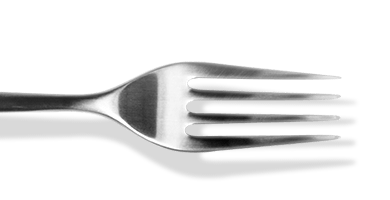

Recently Published
Different Types of Mushrooms
Types of Forks
Deep Fryer Temperatures
Recent Blog Posts View Blogs

How to Cut Green Onions
From soups and salads to stir-fries and garnishes, green onions add a fresh and vibrant flavor to many recipes. While cutting green onions may seem like a simple task, there are several factors that you should take into account to ensure that you achieve the desired results. We'll walk you through the proper way to cut green onions below. What Are Green Onions? Green onions, also known as scallions, are young onions harvested before they fully mature. As a result, they have an underdeveloped bulb and long, green leaves. One of the defining characteristics of green onions is their mild flavor compared to other types of onions. Their taste is less pungent and sharp, and they can be used for a wide range of culinary applications. Green onions enhance the visual appeal of your signature dishes and can be sauteed, grilled, and roasted. It's important to note that they are a relatively inexpensive ingredient, making them accessible to commercial kitchens with different budgets. What Part of the Green Onion Do You Use? Although every part of a green onion is edible, most recipes call for the white and pale green portion. The dark green portion is usually reserved for garnishing purposes. It's worth noting that most grocery stores sell green onions without the bulb attached. How to Cut a Green Onion The way you cut green onions can impact the texture and flavor of your final dish, so you should always read your recipe before cutting. Follow these steps to cut green onions the right way and get the best results: Clean the onions: Begin by cleaning your green onions. Rinse them thoroughly under cold water and pat them dry with a paper towel before proceeding. Trim the onions: Remove the root ends of the green onions, as they can be stringy and tough to chew. Next, trim the tips of the green leaves to make sure your onions are uniform. Be sure to remove any layers that seem unsightly or wilted. Cut the onions: The types of cuts you make will vary depending on the recipes you are preparing. Some recipes may call for the onions finely chopped, which you can achieve by holding them together with one hand while using the other hand to make even, small cuts. Other recipes call for diagonal cuts, which you can perform by positioning the knife at a 45-degree angle. Some recipes may also call for thick slices, which require you to hold the trimmed onions together and make perpendicular cuts. How to Store Green Onions When it comes to storing green onions, there are two main methods to keep them ready for use: in the refrigerator and the freezer. Each method has its own steps and considerations, and you should use the method that best fits your culinary needs. Storing green onions in the refrigerator: When stored properly in the refrigerator, green onions can last up to 5 days. Cut them in advance and place them in an airtight container to maintain freshness and prevent the onions from wilting quickly. For the best results, separate the whites and greens of the green onions before storing them. Storing green onions in the freezer: Green onions can last up to 4 months in the freezer. Before freezing, wash the green onions thoroughly and allow them to completely dry to prevent them from becoming mushy or developing freezer burn. Once dry, you can freeze them whole or chop them into smaller pieces depending on preference. Place them in an airtight container to prevent freezer burn and unwanted odors from seeping in. How to Keep Green Onions Fresh There are several methods you can use to keep green onions fresh. Not only does this ensure a better product, but it also allows you to reduce food costs. Use the tips outlined below to ensure proper storage conditions and reduce the risk of damage or spoilage. Transport with care: Green onions can easily be damaged if not handled gently. Avoid placing heavy items on top of the green onions or overcrowding them during transportation. Keep the roots intact: It's crucial to keep roots intact until you are ready to use them. The root is essential for drawing moisture and nutrients into the plant, which helps to keep the leaves crisp and vibrant. It's also important to trim any brown or wilted leaves before storage. Maintain moisture: To keep the leaves from drying out, place the green onions in a container with a damp paper towel or wrap them loosely in a damp cloth. Doing so retains moisture and keeps the leaves firm and fresh during storage. Keep bulbs damp: In addition to keeping the leaves hydrated, ensure that the bulbs remain damp. If the bulbs dry out, your onions may lose flavor and texture. Green Onion Substitute If your recipe calls for green onions but you don't have any on hand, there are a few substitutes you can use. These substitutes will vary in flavor and texture but can be used in a pinch if needed. Keep in mind that the substitution ratios may vary depending on the recipe and personal preference. It's always a good idea to taste as you go and adjust the amount of substitute accordingly. Chives: Chives are smaller and more delicate than green onions. They have a mild onion flavor and can be used as a garnish. Shallots: Shallots are the most comparable in terms of flavor to green onions. They have a similar mild taste and are uniform in texture and color. Leeks: The white and pale green areas of leeks have a mild onion flavor that can mimic the taste of green onions when cooked. Because of their distinct flavor and versatility, green onions are a popular ingredient in many cuisines. By following the information outlined above, you can prepare green onions the right way and ensure they stay fresh and flavorful.
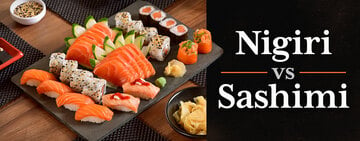
Nigiri vs Sashimi
When it comes to Japanese cuisine, sushi is often the first thing that comes to mind. Within the world of sushi, various types offer unique flavors and experiences. Two popular options are nigiri and sashimi. They usually appear together on sushi menus, but what are the differences? While both invol

How Many Glasses Are in a Bottle of Wine?
When you’re pouring wine for your guests or performing a formal wine service, you should be familiar with how many glasses of wine you get out of one bottle. This way, you’ll always provide the right-sized pour for each person and be able to offer suggestions on how many bottles are needed per table
Restaurant Management View More

How Much Does It Cost to Start a Restaurant?
Opening a restaurant is your dream, but is it something you can afford? Don't give up if you're intimidated. Just like any big investment, most people require financial assistance in the form of a bank loan to afford the startup costs. We'll help you weed through the individual costs of starting a r

Fine Dining Etiquette for Servers
Fine dining restaurants are known for delivering the highest level of customer service. Guests expect elegant ambiance, upscale table settings, and a menu with higher price points. They also expect servers to uphold fine dining etiquette. We’ve made a guide of fine dining etiquette tips to help new

How to Reduce Food Costs In Your Restaurant
According to the USDA, 30 to 40% of all food produced in the U.S. is wasted, which ends up costing approximately $161 billion every year. One of the biggest contributors to the food waste problem is the restaurant industry, and all of that waste can hurt your bottom line. By setting goals for your r

Overhead Cost for Small Businesses
Whether you own a restaurant, bar, or catering company, overhead costs are one of the greatest expenses you'll pay to run your small business. By tracking and looking for cost-saving opportunities in your overhead, you can lower expenses and become more profitable. We'll teach you about the differen
Coffee Shop Tips View More

Types of Coffee Drinks
If you have ever been to a cafe or coffee shop, you know the drink menu is often overwhelming. As a coffee shop owner, there are so many types of coffee drinks you can offer your customers that it's difficult to understand the difference between them. We explored the most popular coffee drinks and t

Coffee Brewing Methods
Java, Joe, liquid energy, and brew are just some of the terms used to describe one of the world’s most highly consumed beverages - coffee. Did you know different coffee brewing methods affect the taste and aroma of your coffees? Understanding the types of brewing methods helps you choose the right c
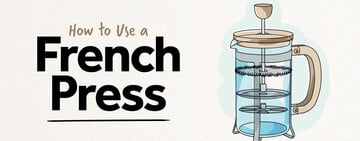
How to Use a French Press
French press coffee is becoming one of the most popular coffee brewing methods in the food service industry. Coffee brewed in a French press offers bold flavors that guests at coffee shops, cafes, and restaurants have come to love. Learn more about this brewing style and follow our French press brew

How to Clean a Coffee Pot
Coffee is one of the most popular beverages in the world. Serving coffee through a decanter or airpot allows you to provide large amounts of coffee at once for your guests, but after multiple uses, minerals and oil build up and can leave a residue. Not only does it look unsightly, but it can also le
Bar Management View More
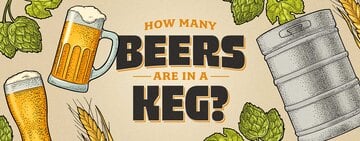
How Much Beer Is In a Keg?
Whether you've just opened a bar, own a catering business, or want to serve beer at a backyard barbeque, kegs are a convenient option for providing drinks to a crowd. They are a crucial tool in the world of commercial beverage service, allowing you to serve large quantities of beer without using ind
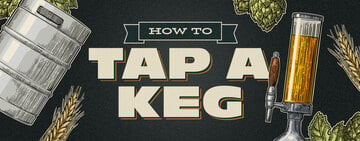
How to Change a Keg
Changing a keg is fundamental for aspiring bartenders and establishments serving draft beer. Whether you operate a bustling bar, a trendy brewery, or a cozy pub, knowing how to properly tap a keg is essential to maintaining a steady flow of refreshing beer for your patrons. Use this step-by-step pro

How to Become a Bartender
Becoming a bartender requires strategically placing yourself in a position where you can observe, learn from, and support an experienced bartender. By seeking entry-level positions at bars and restaurants, you can create an environment that allows you to acquire knowledge while earning a paycheck. W

How to Obtain a Liquor License
Selling wine, beer, and alcoholic drinks can boost your profits considerably, but you'll need a liquor license to do it. Unlike some other licenses and permits, a liquor license comes with a unique set of requirements based on the state where you operate. We'll walk you through the ins and outs of l
Eco-Friendly Tips View More

Ways to Reduce Food Waste in Your Restaurant
Running a foodservice operation requires a lot of thinking. You have to order ingredients on time, balance your finances, and manage your staff amidst a world of other concerns. As important as it is to consider what food you’re making, it’s equally important to think about what happens to food that’s left uneaten. According to Feeding America, America produces an estimated 72 billion tons of food waste each year. How to Reduce Food Waste in Your Restaurant If you're looking for food waste solutions and how to reduce restaurant food waste in your establishment, follow the steps below to get started: Click any of the tips below to read the section that interests you: Conduct a Food Waste Audit Seek Food Waste Solutions Use Alternative Waste Disposal Options Schedule Regular Check-Ins to Monitor Food Waste 1. Conduct a Food Waste Audit A food waste audit is identifying where your operation's food waste comes from, so you can then find ways to reduce your restaurant's food waste. The first step to reducing food waste is to find out exactly how much you’re wasting and what kind of waste your establishment is producing. How to Conduct a Food Waste Audit There are two main factors to take into account as you track your food waste. You need to consider how much food is being wasted and how many people are coming through your restaurant. By gathering data for both of these variables, you can get a better sense of what your biggest source of waste is. 1. Food log system Provide your staff with a simple sheet of paper where they can keep track of what's being thrown out, why it's being thrown out, and how much is wasted. As an alternative, there are waste tracking systems like Leanpath that use a specially designed scale with a touch screen terminal and computer software to track how much food you're throwing out without the hassle of a pencil and paper. Also, be sure to keep a second log system for post-consumer waste, or what food customers pay for but don’t eat. This type of food waste is much more difficult to control because, ultimately, if that toddler at table 3 doesn't want the broccoli that was ordered for them, odds are good that you'll get it back untouched when they leave. Still, it's well worth evaluating what is being thrown out and how much this amounts to. Gathering as much data as feasibly possible will only help you when it comes time to evaluate the results and make changes to how your operation handles restaurant food waste. 2. Traffic log system Another common tool that many restaurants use is a daily log of how much traffic the restaurant received and what the weather was like that day. For example, a log may show that 280 guests were served on the Friday before Christmas and the weather was 50 degrees and sunny. While this data may not seem useful right away, it’s immensely helpful when it comes to planning for the following year’s customer volume. If chefs can get a baseline of how much traffic to expect, based on the previous year’s findings, they will have a better sense of how much food to order. As years go by, this data becomes more and more valuable because the trends become clearer. Many POS systems feature daily log capabilities, so it’s worth looking out when you choose a POS for your business. 2. Seek Food Waste Solutions Once you know what’s being wasted, talk to your staff and try to think of ways to improve. What are the biggest contributors to food waste in your kitchen? Why are specific items thrown out? These are the questions that should be in the back of your mind as you look at the data. An easy way to think about the next steps is to break up your waste types into three categories: Pre-consumer waste - food that doesn’t even leave the kitchen Post-consumer waste - food that’s purchased by a customer, but not eaten Disposables - things like paper goods, plastic utensils, and packaging Next, consider the following options and determine which ways make the most sense to implement as solutions to each type of waste: Ways to Reduce Pre-Consumer Food Waste Pre-consumer waste is the area where you likely have the most opportunity for positive change because there are many factors within your control when it comes to ordering, storing, and prepping your ingredients as well as how you handle surplus ingredients. Evaluate inventory - If you find that food sits around too long in storage, make sure you’re not ordering too much. Maximize shelf life - If the ingredients you need are going bad before you have a chance to use them, make sure perishables are being properly stored so that you’re not wasting ingredients before they are even cooked. Find ways of repurposing ingredients - Try making day-old bread into croutons, or putting leftover turkey meat into a soup. Similarly, an innovative chef will be able to transform excess ingredients into a daily special. There are also a lot of great ways to use overripe fruit before it goes bad. Train staff to reduce food waste - Make sure your staff knows how much ingredients cost. Train them to treat each ingredient as if they bought it with their own money. Training staff on proper storage techniques such as how to flash freeze food will be a big help in reducing food waste. Proper preparation techniques also help to reduce the waste of perfectly good food. Keep your stock organized - Make sure that your perishables are being used promptly by developing a refrigerator rotation system. Many restaurants call this the "first in, first out" system, more commonly known as FIFO. Use stickers with the packaging date displayed or "Use First" written in large letters to help staff recognize exactly which products need to be used quickly to prevent spoilage. Offer staff meals - If there’s just a small amount of ingredients left that won’t be enough for another dinner service, you can give it to your staff for free. Feeding your staff raises morale and prevents good food from being thrown away. Consider donating food - If you have items that are still safe for consumption but, for one reason or another, can’t be used, a local food bank may appreciate your contribution to feeding people in your community. Programs like Feeding America make it easy to put those unsellable leftovers to good use. Food banks will sometimes even come to your establishment and pick up food for free, and you can claim these charitable donations on your tax return. Food scraps can be used for animal feed - Many local farmers will provide low-cost or free pick up for food scraps, which can be fed to hogs or other animals. If you go this route, you will want to make sure you are following any local, state, or federal regulations on what can and can't be used for animal feed. It presents another chance to help out the local economy while cutting back on your food waste at the same time. The EPA offers a guide covering some additional ways to do this. Ways to Reduce Post-Consumer Waste There’s not much you can do with the food once it’s left your kitchen, but you can make sure that you’re presenting guests with the necessary information and proper portion sizes, so your customers know what to expect and can eat until they are comfortably full. Monitor portion sizes - If your portions are too big for customers to finish, try a portion scale or some portion spoons to make sure that your customers are getting an appropriate amount of food. Standardizing recipes is one way of ensuring that every member of your staff is plating the same amount of food every time. Manage customer expectations - Guests will be less likely to send a dish back if it’s been completely and accurately described on the menu. Make sure your wait staff can explain every item on the menu and answer any questions that guests may have. Track the popularity of each dish - If certain menu items are unpopular, you might want to consider adjusting the recipe or removing it from the menu. Encourage guests to take their food home with them - This is standard practice at most restaurants. Make sure you keep a variety of disposable containers on hand, so guests can take home whatever they can’t finish. Disposable Alternatives While the use of disposables aids in reducing food waste in restaurants, they are inherently designed to be thrown away, so be mindful of which disposables you choose and try to think of ways around using them whenever possible. Set Up Customer Incentives - If you own a cafe or convenience store, you can set up a discount for customers who bring their to-go mugs. Use Eco-Friendly Disposable - If there’s no way around using disposable items, try to choose items that are environmentally-friendly whenever possible. 3. Use Alternative Waste Disposal Options Consider alternative ways of disposing of your waste that don’t bury food, plastics, cans, and cardboard in a landfill. Composting - If you are fortunate enough to have space, you can compost on-site. If you don't have the space to run a composting program, finding a composter to take your scraps can still be a more cost-effective alternative to the traditional disposal methods. Essentially, all you have to do is separate compost-worthy material from the regular "garbage". Composting centers are still gaining ground and therefore not as widespread as traditional landfills, but online resources make it easy to find a compost site near you. If composting sounds like a real possibility for managing restaurant food waste at your establishment, you can find out all the details in our article about restaurant composting. Recycling - Recycling is a simple way to deal with plastic, cardboard, and glass waste that cannot be avoided, and many restaurants already do it to reduce their environmental footprints. For more details about recycling, refer to our restaurant recycling article. Making Alternative Waste Disposal Work For You There can be many benefits to using alternative waste disposal methods, both environmental and financial. However, not every method will be a good fit for every restaurant. Luckily, the EPA offers handy tools for monitoring food waste management that can give you an idea of how cost-effective some of the above methods to reduce food waste can be and which ones could be a good fit for your business. 4. Schedule Regular Check-Ins to Monitor Food Waste It’s important to assess your food waste regularly so that you can constantly monitor trends and implement any changes that may be necessary. No matter how delicious your recipe is, certain dishes can sometimes simply fall out of fashion as customers seek different, newer options. Staff members may move on, so you’ll have new employees to train and manage. There are so many factors that may contribute to increased waste within your carefully thought-out system, so checking in on them is just part of the process of reducing food waste in your restaurant. What Does it Mean to Be a Zero-Waste Restaurant? A zero-waste restaurant means that a restaurant does not produce any trash or food waste that has to be taken to a landfill. There are few zero-waste restaurants around the world, but many food businesses are taking steps to implement zero-waste practices to minimize their carbon footprint on the world and embrace a completely eco-friendly ethos. Back to Top Even if your business seems to have a good handle on its production of food waste, it's never a bad idea to dive a little deeper into how much restaurant food waste you produce daily. If your waste production turns out to be more than you thought, try taking some simple steps to better monitor and minimize your waste production. Your community, your planet, and your wallet will thank you for reducing food waste.

Top 10 Energy Conservation Tips for Restaurants
Reducing your restaurant's overall energy consumption not only lowers your utility costs, it's also better for the environment. Many food service professionals have been adopting energy conservation methods for the past decade and have drastically cut their energy use and expenses. Here, we've outl

ENERGY STAR Appliances and Rebates
If you’re looking for ways for your restaurant to go green this year, investing in ENERGY STAR appliances will help your business to save money while reducing your carbon footprint. In this guide, we’ll explain what ENERGY STAR is, what it means for appliances, and how you can check if you qualify f

Water Saving Tips For Restaurants
Restaurants are among the top water-consuming establishments across the country. According to the EPA, the average restaurant’s water usage is around 5,800 gallons of water per day, which can add up to 25,000 to 300,000 gallons of water per year. Implementing water saving practices in your kitchen,

Sustainable Seafood for Restaurants
Whether it’s related to food sourcing or disposal methods, sustainability has been at the forefront of foodservice trends and concerns in recent years. One of the primary focuses of the sustainability movement is the health of our oceans and marine life. Over 50% of American consumers identified tha

Types of Eco-Friendly Food Packaging
As businesses seek to reduce their environmental impact, eliminating waste from plastics used in take-out and grab-and-go is one significant way food service establishments can go green. Eco-friendly disposables are a recyclable replacement for single-use Styrofoam containers and plastic bags, makin
Catering Tips View More

Folding Chairs Buying Guide
When designing your business' layout, one of the most important elements to select is appropriate and comfortable seating for your space. It can be overwhelming to choose the right folding chair for your location with dozens of different materials, colors, features, and styles to sift through. This
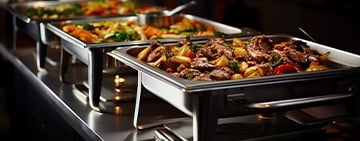
Chafing Dish Reviews
Whether you're hosting a banquet, buffet, or catered event, chafing dishes allow you to serve your signature dishes in style. They make it easy to elevate the presentation of entrees, sides, and desserts for your guests without sacrificing functionality. Chafing dishes come in a wide range of shapes

What Is a Charger Plate?
A charger plate is a large, decorative plate that acts as a base for other dinnerware. Also known as service plates, under plates, or chop plates, charger plates are purely ornamental and aren't safe for direct food contact. They create attractive table presentations at weddings, corporate parties,

Folding Table Buying Guide
Coming in a variety of materials, shapes, and sizes, folding tables are great for indoor or outdoor events, banquets, parties, or even healthcare and institutional use. Thanks to their foldable designs, they offer a way to transform empty rooms into dining areas or lecture halls in minutes and maxim
Industrial View More

How to Set Up a Warehouse
If you've outgrown your current space, starting your own warehouse could be the next logical step in storing and selling your company’s products online. Or it could be a profitable new venture to create a warehouse and rent out your space to other businesses. No matter what your business goals are, setting up a warehouse from scratch requires some careful planning. The layout and allocation of your space need to be mapped out early on. We’ve created this warehouse layout guide to help you set up any type of warehouse for maximum efficiency. Shop All Industrial Supplies Click below to learn more about basic warehouse design: Inbound Loading Dock Receiving Storage and Putaway Picking Shipping Outbound Loading Dock Other Warehouse Spaces Common Warehouse Layouts Warehouse Layout Before you being laying out the schematic of your warehouse, you should be familiar with the essential functions of a fulfillment center and the equipment used to handle materials. Goods come in, they get put away in storage, and they get picked for shipping. To make this happen, the goods flow from one section of the warehouse to the next. Your warehouse setup will be the most successful if you provide space for the following locations: 1. Inbound Loading Dock The loading dock, also called a receiving dock or loading bay, is the entry point where inbound trucks deliver goods to your warehouse. On the exterior of the building, a large parking area provides room for trucks to back up to the building. The dock floor is built to be flush with the truck beds so workers inside the building can enter the trailer with forklifts and pallet jacks. Loading Dock Layout Tips The parking area outside the dock should provide enough room for the largest trucks to turn around and back up to the loading bay. Dock height should be based on the bed height of the most common delivery vehicle used. Consider the number of pallets you'll be unloading during peak delivery times and allocate space for the goods and the loading dock equipment. 2. Receiving The receiving process begins as soon as goods are unloaded on the dock. Shipments are inspected, invoices are checked, and permanent storage locations are assigned for each item. By allocating a holding space for these tasks to be performed, you avoid bottlenecks when multiple shipments arrive at once. A successful receiving area should be located right next to the inbound loading dock. You’ll need space for pallets and boxes to be unloaded and a temporary space for receiving tasks to be performed. The receiving manager needs a home base to work from, which might include a permanent desk with outlets for a computer and room for filing cabinets if you use paper invoices. Receiving Area Layout Tips You can make your receiving process more efficient by including space for temporary holding locations where goods can be staged before putaway. Allow space for performing a thorough quality control check before goods are put in storage. Catching any defects or damage now will help you in the long run. 3. Storage and Putaway Most of the square footage in your warehouse will be dedicated to storage space. When you look at your warehouse space in terms of cubic feet, your storage area should take up between 22% to 27% of the total warehouse space. That percentage may sound small, but it’s because cubic feet accounts for all the vertical space in between the floor and ceiling, not just floor space. For maximum efficiency, you’ll need to take advantage of the clear height of your warehouse. What Is Clear Height in a Warehouse? Clear height is the maximum usable vertical space in your warehouse where goods can be stored. The clear height in your building will be lower than the ceiling height and must account for sprinkler systems or ductwork. Storage Area Layout Tips Take advantage of the available clear height by using pallet racks and industrial shelving to store goods vertically. Using warehouse management system software helps you to maximize your storage space and assign locations. Aisles in your storage area need to be wide enough to accommodate pallet jacks (4' to 5' wide) and/or forklifts (12' to 13' wide) Don't forget to install the proper lighting in your storage area so that goods are visible to order pickers. 4. Picking Picking is the process of retrieving goods from storage to fulfill customer orders. The warehouse employees that perform this task are called pickers. Your picking area is the home base for order pickers — it's the place where they receive their list of items and where they bring orders that are fulfilled. Picking should be located very close to the storage area and may even share some square footage. The picking area should have enough room to store picking equipment like forklifts and pallet jacks. You'll also need space for the picking manager's desk and computers for accessing the warehouse management system. Picking Area Layout Tips Add space in your layout for roller conveyors to carry fulfilled orders from picking to shipping. If your warehouse is small and you don't store items on pallets, shopping carts and shopping baskets can be used to collect smaller items during picking. 5. Shipping After orders have been picked, they are sent to the shipping and packaging area to be boxed up for fulfillment. The shipping area should be close to your storage and picking locations so that goods flow efficiently from one area to the next. Make space in your shipping area for shipping stations — work tables that are set up with all the shipping supplies your workers need to package goods. Shipping Area Layout Tips Besides shipping stations and packing tables, you’ll need space to store your backup inventory of shipping boxes and supplies. It can be helpful to add space for order staging, or organizing shipments by carrier so they are ready to be loaded onto outbound trucks. 6. Outbound Loading Dock The outbound loading dock is the end of the line for your products. It's the exit point where goods are loaded onto trucks for shipping. Just like the inbound loading bay, the outbound bay area should be the same height as the truck beds that back up to the dock. Pallets that are staged in the shipping area can be quickly moved onto trucks and then onto their final destination. Creating two loading bays (inbound and outbound) in your warehouse is necessary for a couple of reasons. For efficiency, goods should always be flowing forward in your warehouse. If you use the same dock for shipping and receiving, you will have goods moving both ways, which creates space issues and confusion. You also have to consider the truck yard and how many trucks are coming and going from your warehouse. Separating the inbound and outbound traffic helps alleviate bottlenecks. Outbound Loading Dock Layout Tips Include plans for proper ventilation on your loading dock because idling trucks create a lot of exhaust fumes. Organizing outbound shipments by carrier type helps to make shipping more efficient. Provide enough space for your outbound loading equipment like pallet wrap machines, pallet jacks, and dock ramps. Other Warehouse Spaces There are other warehouse spaces you'll need to include in your building layout. These locations aren't related to the product cycle but are necessary for business operations. Returns No one wants to think about their products being returned, but it's a fact of life that returns will happen, and they need to be processed the right way. A separate space for processing returns helps to keep those items segregated from the other products in your warehouse. Returns require their own receiving, inspection, and putaway process. Offices In smaller warehouses environments where you are the owner and operations manager all-in-one, you might not need a dedicated office space. Sometimes a desk on the floor of the warehouse or a mezzanine will do. But in other cases, where you have a diversified team of managers and supervisors, it's useful to have office spaces for conducting phone calls, meetings, and administrative duties. Breakrooms Your employees need a place to take breaks, eat their lunch, and store their personal belongings. Designing a space for your workers to unwind when they are off the clock is important for job satisfaction and employee retention. Restrooms Restrooms are essential for any business. You'll need to base the number of restrooms in your warehouse on the size of your workforce. If you have under 15 employees, one restroom might be sufficient. OSHA provides guidance on their restroom and sanitation requirements page. Maintenance and Parts Outside of the storage space needed to hold your products, you'll need a space to store all the parts and replacements that keep your warehouse running. Items like lightbulbs, hardware for industrial equipment, and tools for performing maintenance should all have an organized home in your warehouse. Types of Warehouse Layouts If you are building a warehouse from the ground up, there are three popular layouts that you can rely on when you plan your schematic. These designs all feature a universal rule — keep the inbound and outbound docks separated. U-Shaped Warehouse U-shaped warehouses are very common. The layout is similar to a semi-circle, with the inbound loading dock on one side and the outbound dock on the opposite side. Storage and picking are usually stationed in the center. Products are delivered on one side of the U and flow in one direction to the other side. I-Shaped Warehouse In the I-shaped layout, also called a through-flow layout, the warehouse is shaped like a large rectangle. The inbound dock is positioned at one end of the rectangle with the outbound dock on the opposite side. Storage is located in the middle of the rectangle. L-Shaped Warehouse The L-shaped warehouse also positions the inbound and outbound docks on opposite sides. The flow of traffic and goods move from one side of the L to the far side, with storage located in the "corner". With the increase of consumer online ordering and e-commerce fulfillment, warehouse space has become very valuable. If your business is outgrowing a garage or stock room, it might be time to think about building your own warehouse space to store and distribute goods. Keep all the essential warehouse functions in mind when you create a layout and don't forget to account for future growth.

Types of Casters
Whether you are replacing existing casters or looking to add casters as an accessory to equipment, this guide will take you through the types of caster mounts, styles, and wheel materials to help you determine which type of caster best fits your needs.Shop All Casters

Generator Buying Guide
Food spoils when the refrigerator won't cool, chefs can't cook when the oven won't heat, and power tools are useless when you're off the grid. Whether electrical access is unavailable or the power goes out in your building, you need a way to keep things running. That's where generators come into pla

How to Use a Fire Extinguisher
A fire extinguisher is an essential fire safety tool to keep in any workplace. For the safety of your employees and guests, it is required by law for any commercial business to keep a fire extinguisher readily available. Many states even require employees to be trained to use one. Below, we’ll inves

How to Install Casters on a Work Table
Kitchen work tables are an essential piece of equipment in foodservice establishments, and chefs use them to perform a variety of food prep tasks. While work tables provide an excellent space for kitchen prep, it's difficult to clean beneath a stationary table. That's where casters come in! It's eas

Emergency Supplies List For Businesses
A part of overall restaurant safety is to ensure that you have a business disaster plan in place to help protect your employees and customers in the event of an emergency. Whether it's a fire, an extended power outage, or a natural disaster, having the proper emergency supplies available can sometim
- Topics 1356
- Industrial 55
- Troubleshooting Guides 21
- Restaurant Management 128
- Bar Management 56
- Catering Tips 36
- Bakery Management 42
- Food Trucks & Concessions 49
- Advertising & Marketing 37
- Eco-Friendly Tips 11
- Facility Layout & Design 42
- Coffee Shop Tips 28
- Installation & Maintenance 51
- Janitorial & Pest Control 30
- Safety & Sanitation 88
- Startup Tips 104
- Menu Design 10
- Kitchen & Cooking Tips 83
- Hospitality Management 24
- Pizza & Sandwich Shop Tips 36
- Smallwares 37
- Food Prep 89
- Tabletop Items 17
- Disposables 22
- Calculators & Tools 6
- Consumables 52
- Warewashing & Laundry 19
- Cooking Equipment 91
- Food Storage & Refrigeration 51
- Beverage Equipment 35
- Office Supplies 6
- Resource Type
- In-Depth Articles272
- Buying Guides298
- How-Tos95
- Product Reviews78
Join Our Mailing List
Receive coupon codes and more right to your inbox.






